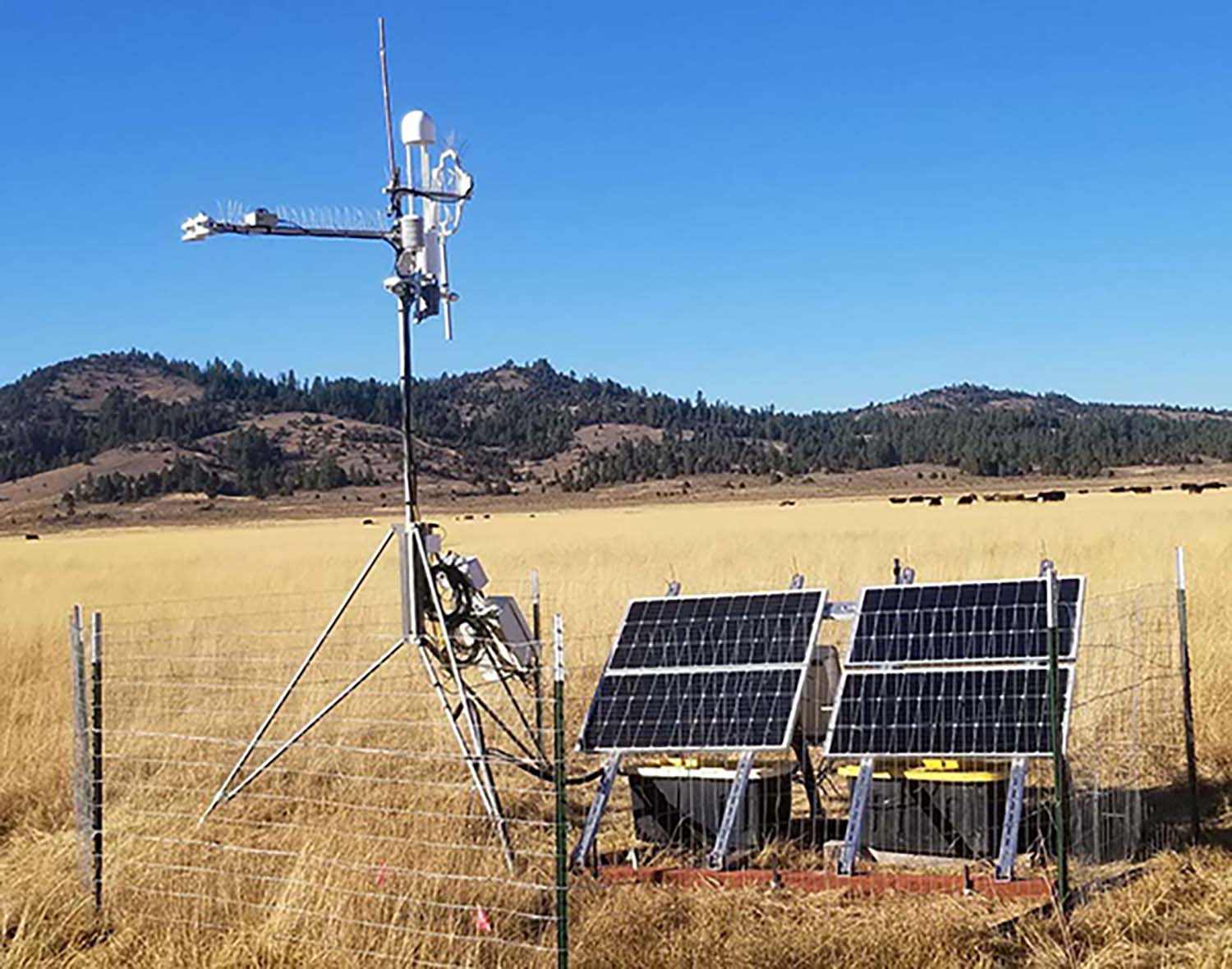Research in the Bioclimate Lab
 |
|
Research investigations in the Bioclimate Lab center around interactions between ecosystems and the atmosphere, particularly carbon cycling and greenhouse gas exchanges, as well as water cycling, heat budget and microclimates. Most of the research questions are driven by environmental problems or concerns such as the role of vegetation in urban heat island mitigation, environmental and land management controls on ecosystem carbon sequestration, and the impact of healthy soils practices on GHG emissions. For the most part, our research involves field-based experiments or monitoring systems, such as eddy covariance and flux chamber systems. Current and recent projects are listed below, along with the folks involved and links to associated theses and publications. |
Carbon cycling in mountain meadows

 |
Mountain meadows are important environmental systems that form in topographical depressions within watersheds, often containing shallow groundwater, finely textured and organically rich soils and abundant plants dominated by hydric to mesic herbaceous species. Healthy meadows have the capacity to sequester large amounts of atmopsheric carbon and store it in rich organic soils. Historic and current land use (e.g. grazing, logging and mining) in the Sierra Nevada have contributed to increased stream channel incision and lowering of water table in many of the 17,000 meadows. Meadow hydrological restoration efforts have increased recently to raise water tables in degraded meadows. In addition, climate change in the Sierra Nevada is likely to have a signififcant impact on meadow hydrology and water availability for plant productivity. Our goal is to understand the role of land-use practices and climate change on the meadow ecosystem functioning and carbon cycle. |
|
|
Shamim Mousavi |
Thesis (2021): Assessing Meadow Carbon Cycling Using Digital Repeat Photography and Eddy Covariance Techniques |
|
|
Darren Blackburn |
Thesis (2017): Investigations of Carbon and Water Fluxes in a Sierra Nevada Meadow |
|
|
Suzanne Maher |
Thesis (2016): Bio-micrometeorology of a Sierra Nevada montane meadow |
Journal articles:
|
Blackburn, D.A., Oliphant, A.J. & Davis, J.D. Carbon and Water Exchanges in a Mountain Meadow Ecosystem, Sierra Nevada, California. Wetlands 41, 39 (2021). https://doi.org/10.1007/s13157-021-01437-2 |
|
Castelvi, F. and Oliphant, A. J. 2017: Daytime sensible and latent heat flux estimates in a mountain meadow using a method based on surface renewal which requires land surface temperature and measurements taken at low frequency as input. Agricultural and Forest Meteorology, 236, 135-144. |
Conference presentations:
|
Mousavi, S.*, Oliphant A.J., Baguskas, S.A., Simonin, K.A. 2019. Observations of Ecosystem CO2 Exchanges in a Montane Meadow in Northern Sierra Nevada, California, Poster EP51E-2149, American Geophysical Union Fall Meeting, San Francisco, CA. |
|
Simonin K.A., Baguskas, S.A., Oliphant, A.J., Davis, J.D., Nanus, L., Blesius, L., Physioc, K.*, LeBeau, R.*, Mousavi, S*, Studwell, A., Clark, Q. 2019. Montane Meadow Restoration: Quantifying the Impact of Biogeomorphic Change on Ecosystem Function, Poster EP51E-2145, American Geophysical Union Fall Meeting, San Francisco, CA. |
Soil GHG emissions from healthy soils agricultural practices
 |
Agricultural soils emit large amounts of greenhouse gasses (GHG) to the atmosphere, particularly carbon dioxide (CO2) in sub-saturated conditions and methane (CH4) in saturated or anoxic conditions. Agricultural soils tend to be significant sources of nitrous oxide (N2O), particularly when nitrogen amendments are used. Given the scale of global agriculture and its greenhouse fingerprint, the impact of different types of soil amendments and management practices on soil GHG emissions has received increasing attention. The objective of this project is to examine the impact of soil amendment and management practice on GHG fluxes. In this project the main amendment is actively aerated dairy cow manure, referred as compost tea, which is applied to the orchard soil twice a year. GHG emissions are measured using a static-chamber approach. Emissions of GHG for soils with compost tea amendments and different row management practices are compared to control (no amendments) plots and unmanaged plots. |
| Clarissa Maciel | Graduate student | |
| Jose De Anda | Graduate student | |
| Angelica Crecencia | Undergraduate student |
Conference presentations: |
Role of vegetation in urban microclimates and GHG emissions

| Vegetation plays an important role in urban climate both locally, in providing a cooling offset for the urban heat island through evaporative cooling, and globally through modification of urban greenhouse gas emissions. |
| Patrick Ehhalt | Graduate student investigating carbon cycling in urban gardens and their contribution to urban GHG emissions. | |
| Jolene Bertetto | Graduate student, Thesis: Investigating the role of vegetation on midafternoon microclimates in a residential courtyard | |
| Reese Hahn | Thesis (2020): Impact of the Built Environment on Microclimate in San Jose, California | |
| Christa Meyer | Thesis (2017):Investigation of the carbon dioxide exchange over a living roof in San Francisco | |
| Siobhan Lavender | Thesis (2015): Impacts of living roofs on urban climate in San Francisco | |
| Ryan Thorp | Undergraduate thesis (2013): Observations of heat, water vapor and carbon dioxide exchanges over a living roof using eddy covariance | |
| Stephanie May | Thesis (2014): Investigations of the Park Cool Island Effect of Golden Gate Park, San Francisco |
Micrometeorology of an ephemeral city, the Burning Man Experiment
Coming soon... featuring Garrett Bradford, Malori Redman, Ryan Thorp
